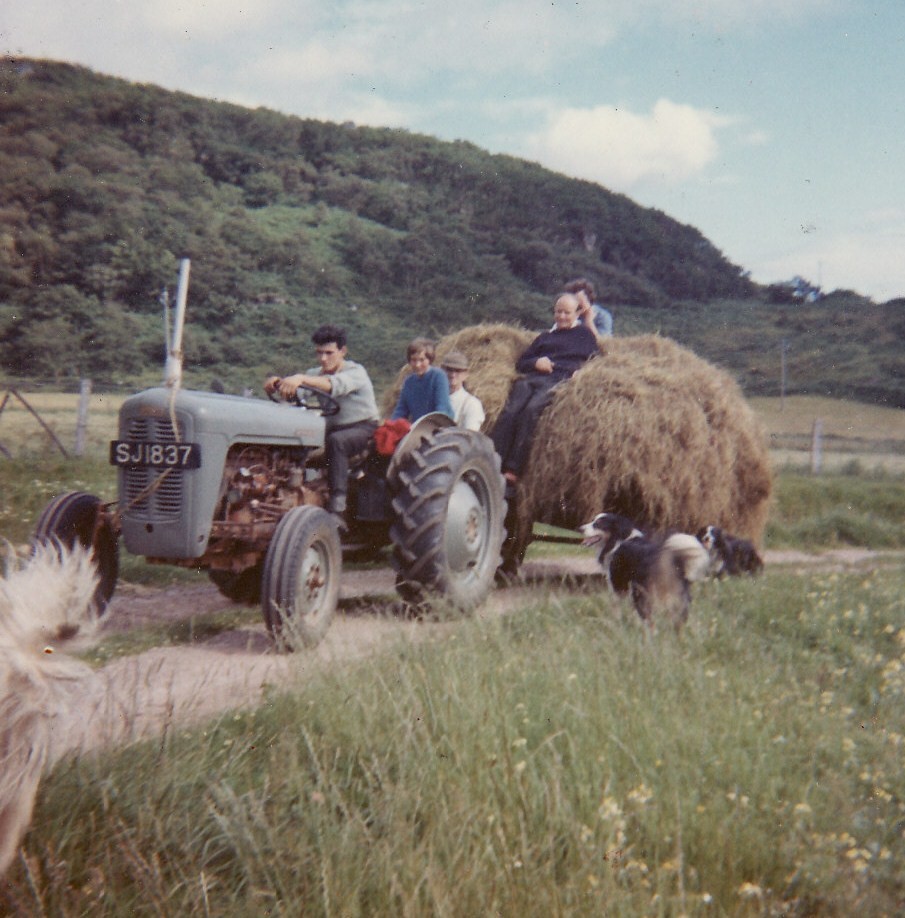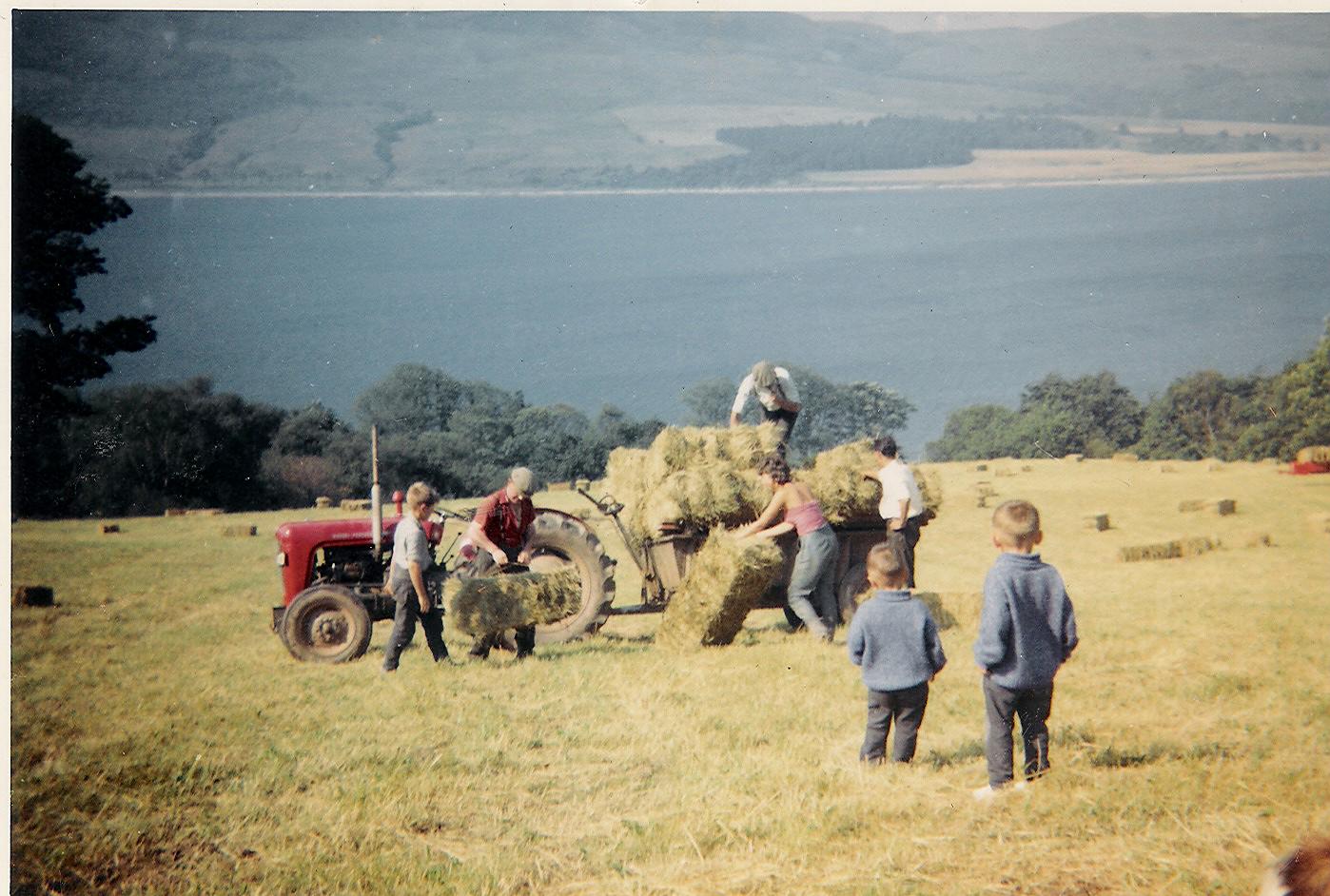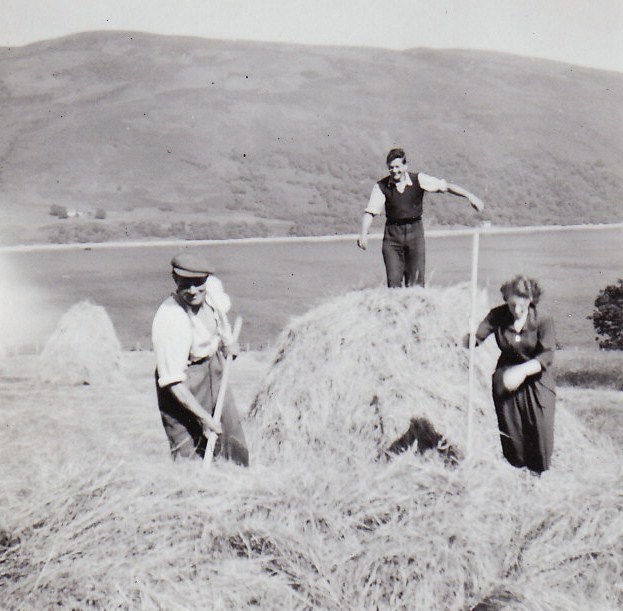By the late 1940’s there were probably about 20 people employed full time in agriculture. Another dozen or so were part-time, often coming over from Ireland to work over the summer cutting bracken and harvesting. The farms were mixed with dairy and beef cattle and hill sheep. Crops, including hay, turnips, oats and corn, were grown as winter feed. Potatoes and milk were also produced, mainly for local consumption.

The land was ploughed by horse well into the 1940’s when tractors were introduced. Within ten years tractors had replaced almost all of the horses.
Times change. Much larger and more efficient agricultural machinery has been introduced, hay silage has replaced almost all other crops and, in common with many other parts of Scotland, farms have amalgamated.

There are now just two working farms remaining; Ardentraive, which includes Milton, Fearnoch and the Altgaltraigs, and South Hall which incorporates the old farms of Glaic, Newton and Couston.

The farm buildings and shepherd’s cottages on Loch Striven, at Trouston, Corrie and Ardbeg are now abandoned.

The farm houses at Upper and Lower Altgaltraig, Couston, Fearnoch and Port an Eilein are private homes and the outbuildings and sheds have been demolished or converted to other uses. The farm at Glaic was badly damaged by shell fire prior to the D Day landings in Normandy. It was demolished following the war and only the byre ruin remains.